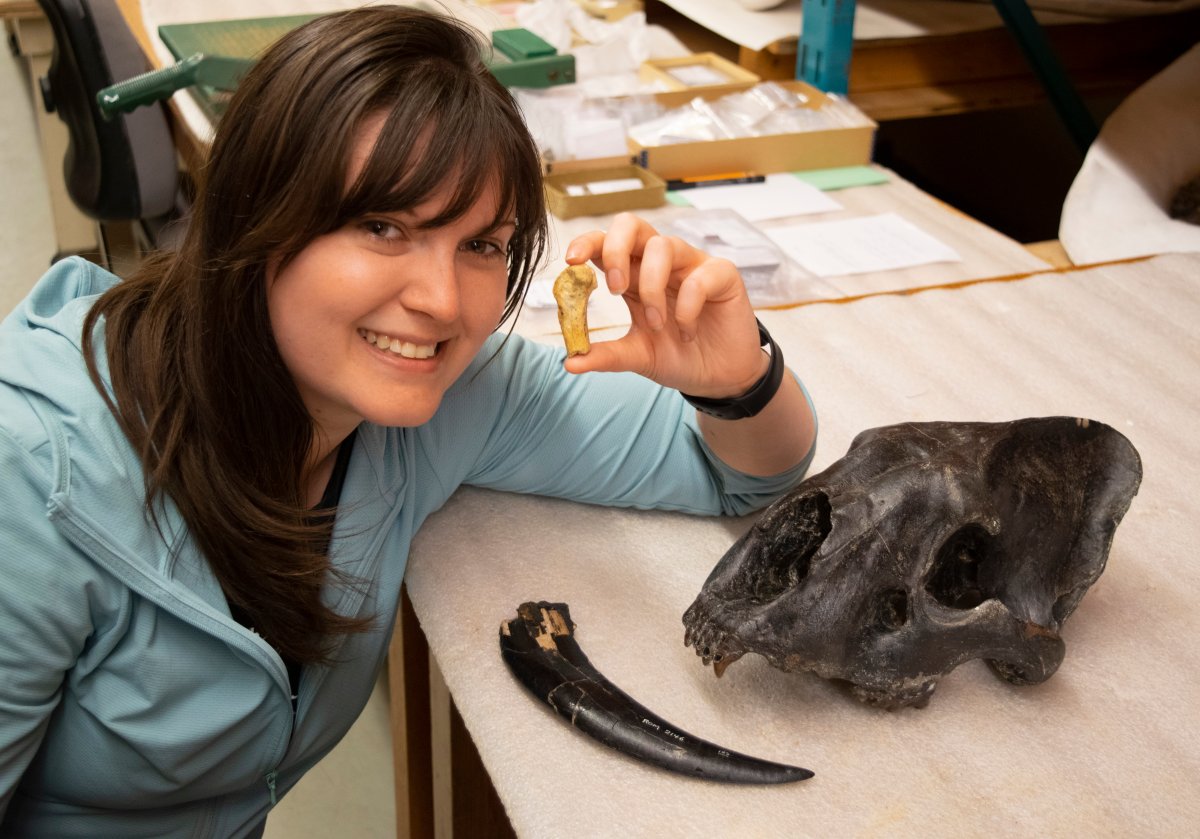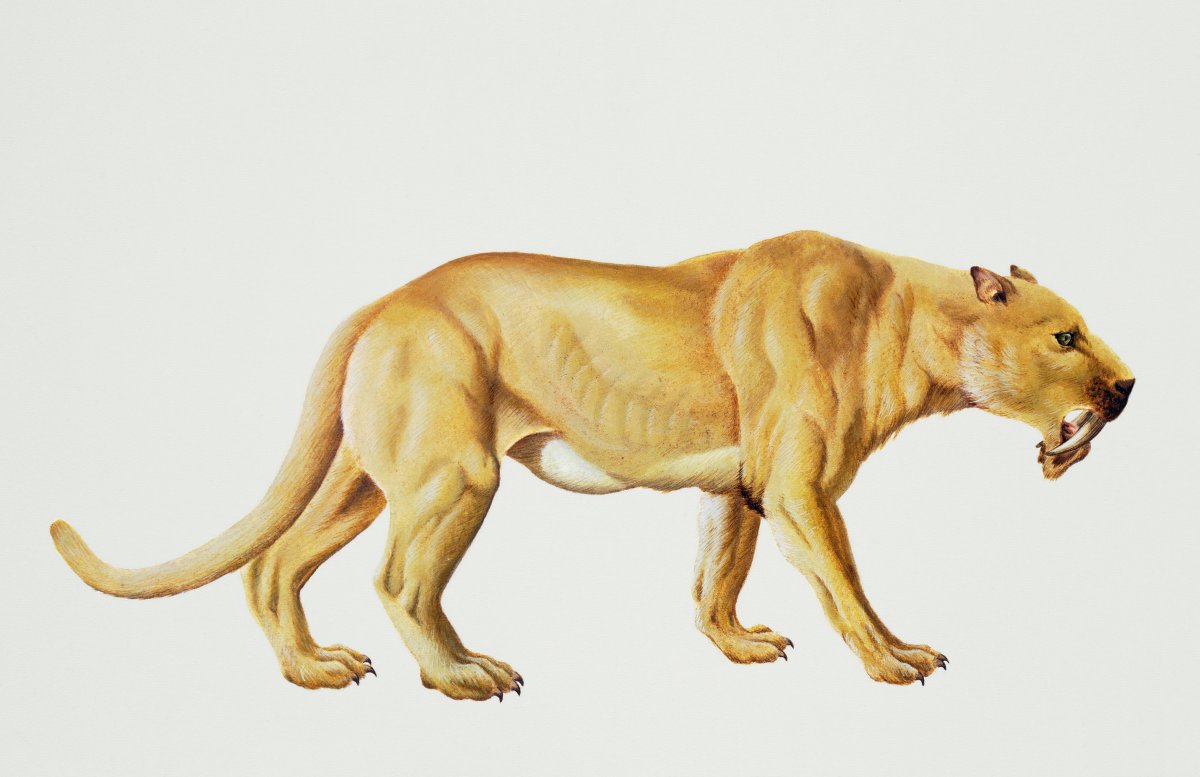Scientists have found fossil evidence from the last ice age of a sabre-toothed cat in southern Alberta — the northern-most record of the predator.

A study by the Royal Ontario Museum and the University of Toronto was published Friday in the Canadian Journal of Earth Sciences.
READ MORE: New horned dinosaur discovered in Alberta
“We were describing the different cat fossils that were found in the Medicine Hat area in Pleistocene deposits,” said Ashley Reynolds, a graduate student at the Royal Ontario Museum who led the study as part of her PhD at the University of Toronto.
“We found potentially four different species, (including) the Smilodon fatalis, which is the famous sabre-toothed cat.”
Reynolds said the sabre-toothed cat is most commonly represented in popular culture, such as Diego from the children’s Ice Age movies and from the end credits of The Flinstones television cartoon.
READ MORE: Head of Ice Age wolf found perfectly preserved in ice in Siberia
Researchers also documented three other types of cats, including the American lion, a lynx or bobcat and potentially a cave lion. The fossil of the cave lion had previously only been found in fossils in Yukon and Alaska.
READ MORE: Ammonite mine near Lethbridge unearths Mosasaur fossil
Supersized cats went extinct at the end of the Pleistocene epoch, which was about 11,000 years ago. They hunted large herbivores — such as camels, horses, giant ground sloths and young mammoths — that were also present at the time.
The sabre-toothed cat fossil is a partial bone of one of the cat’s large forepaws.
“Prior to this being described and its record being confirmed … the previous northern-most record was in Idaho, which is about 1,000 kilometres south of Medicine Hat,” Reynolds said.
Her co-author and supervisor, David Evans, said it’s an unusual find.
“Smilodon is best known from tar pit deposits in California and South America,” he said in a news release.
“So, it’s both exciting and surprising to find evidence of this iconic sabre-toothed predator in Canada.”
Reynolds said her interest in comparing the anatomy of big cats led her to specialize in the study of pre-historic ones.
“I was looking through our drawers in collections on another project,” she said. “I found a little bag that had a bone in that was labelled as ‘Smilodon’ and I thought that doesn’t seem right.
“I went to our collections manager and my supervisor and said, ‘Do you guys know anything about this?'”
After reviewing the bone, which was first collected from the area in the late 1960s and later donated to the museum, it turned out that it was a sabre-toothed cat fossil.
“It was really exciting,” said Reynolds.
“This is way cooler than we thought it would be.”
READ MORE: Well-preserved dinosaur found in northern Alberta named after Royal Tyrrell researcher





Comments